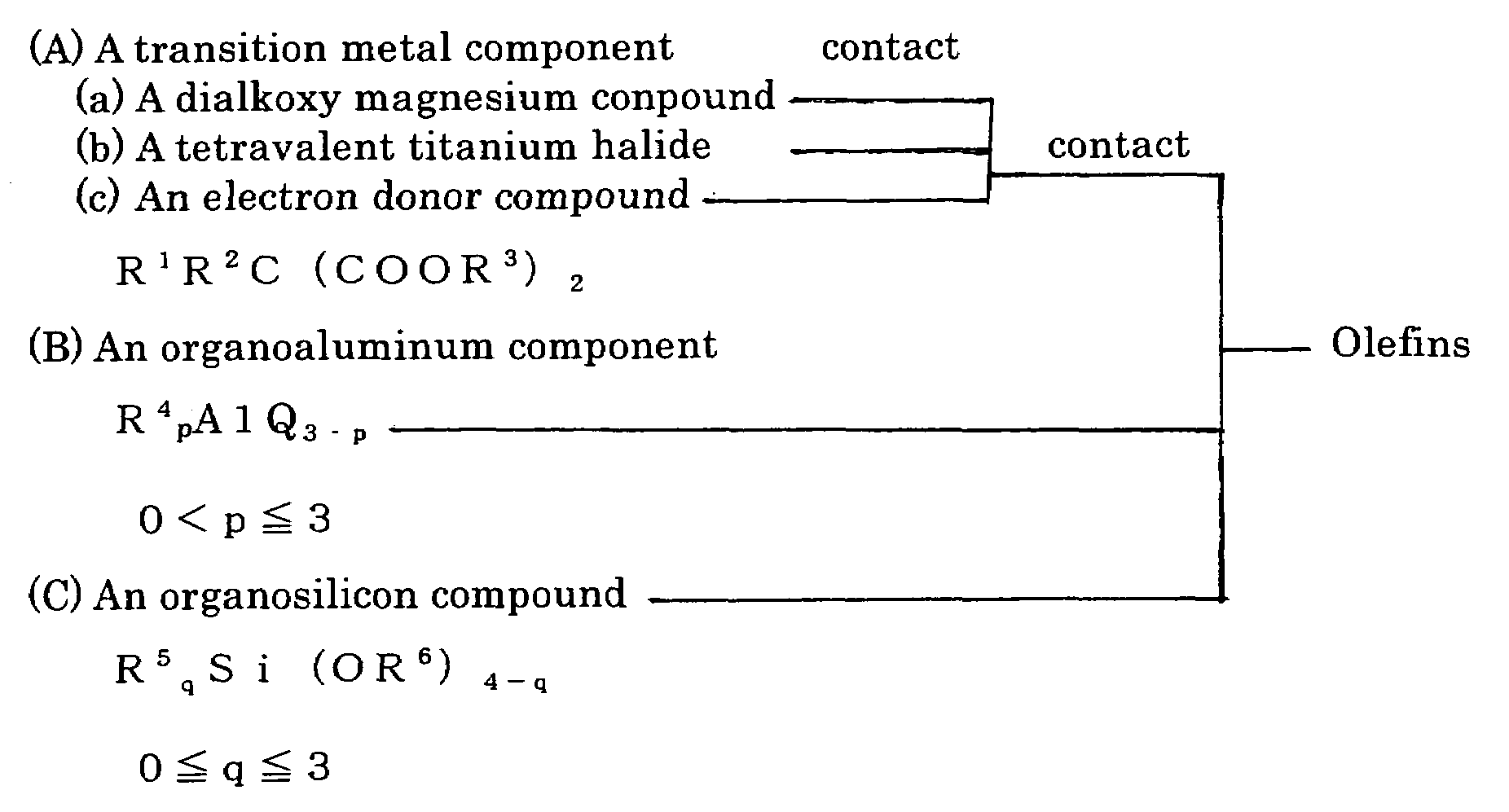Solid catalyst component for olefin polymerization and catalyst
a technology of solid catalyst and olefin, which is applied in the direction of catalyst activation/preparation, organic compound/hydride/coordination complex catalyst, physical/chemical process catalyst, etc., can solve the problems of reduced productivity, limited quantity of hydrogen which can be added, and not necessarily satisfactory for producing high-segment polymers in high yield. , to achieve the effect of high catalyst activity, high yield and high stereoregularity of olefin polymers
- Summary
- Abstract
- Description
- Claims
- Application Information
AI Technical Summary
Benefits of technology
Problems solved by technology
Method used
Image
Examples
example 1
Preparation of Solid Catalyst Component (A)
[0129]A 500 ml round bottom flask equipped with a stirrer, in which the internal atmosphere had been sufficiently replaced by nitrogen gas, was charged with 10 g of diethoxymagnesium and 80 ml toluene to prepare a suspension. After the addition of 20 ml of titanium tetrachloride, the suspension was heated, and when the temperature increased to as high as 80° C., 3.12 ml of diethyl dibutylmalonate was added and the mixture was heated to 110° C. Then, the mixture was reacted for one hour while stirring at 110° C. After the reaction, the resulting reaction mixture was washed three times with 100 ml of toluene at 90° C. After the addition of 20 ml of titanium tetrachloride and 80 ml of toluene, the reaction mixture was heated to 110° C. and reacted for one hour while stirring. After the reaction, the resulting reaction mixture was washed seven times with 100 ml of n-heptane at 40° C., thereby obtaining a solid catalyst component. The liquid in ...
example 2
[0134]A solid catalyst component was prepared in the same manner as in Example 1, except for using 3.07 ml of diethyl diisobutylmalonate instead of 3.12 ml of diethyl dibutylmalonate. A polymerization catalyst was prepared from the solid catalyst component and polymerization was carried out using the catalyst. The content of titanium in the resulting solid catalyst component was 4.1 wt %. The polymerization results are shown in Table 1.
example 3
[0135]A solid catalyst component was prepared in the same manner as in Example 1, except for using 2.78 ml of diethyl isopropylmalonate instead of 3.12 ml of diethyl dibutylmalonate. A polymerization catalyst was prepared from the solid catalyst component and polymerization was carried out using the catalyst. The content of titanium in the resulting solid catalyst component was 3.8 wt %. The polymerization results are shown in Table 1.
PUM
| Property | Measurement | Unit |
|---|---|---|
| boiling point | aaaaa | aaaaa |
| particle size | aaaaa | aaaaa |
| particle size | aaaaa | aaaaa |
Abstract
Description
Claims
Application Information
 Login to View More
Login to View More - R&D
- Intellectual Property
- Life Sciences
- Materials
- Tech Scout
- Unparalleled Data Quality
- Higher Quality Content
- 60% Fewer Hallucinations
Browse by: Latest US Patents, China's latest patents, Technical Efficacy Thesaurus, Application Domain, Technology Topic, Popular Technical Reports.
© 2025 PatSnap. All rights reserved.Legal|Privacy policy|Modern Slavery Act Transparency Statement|Sitemap|About US| Contact US: help@patsnap.com



